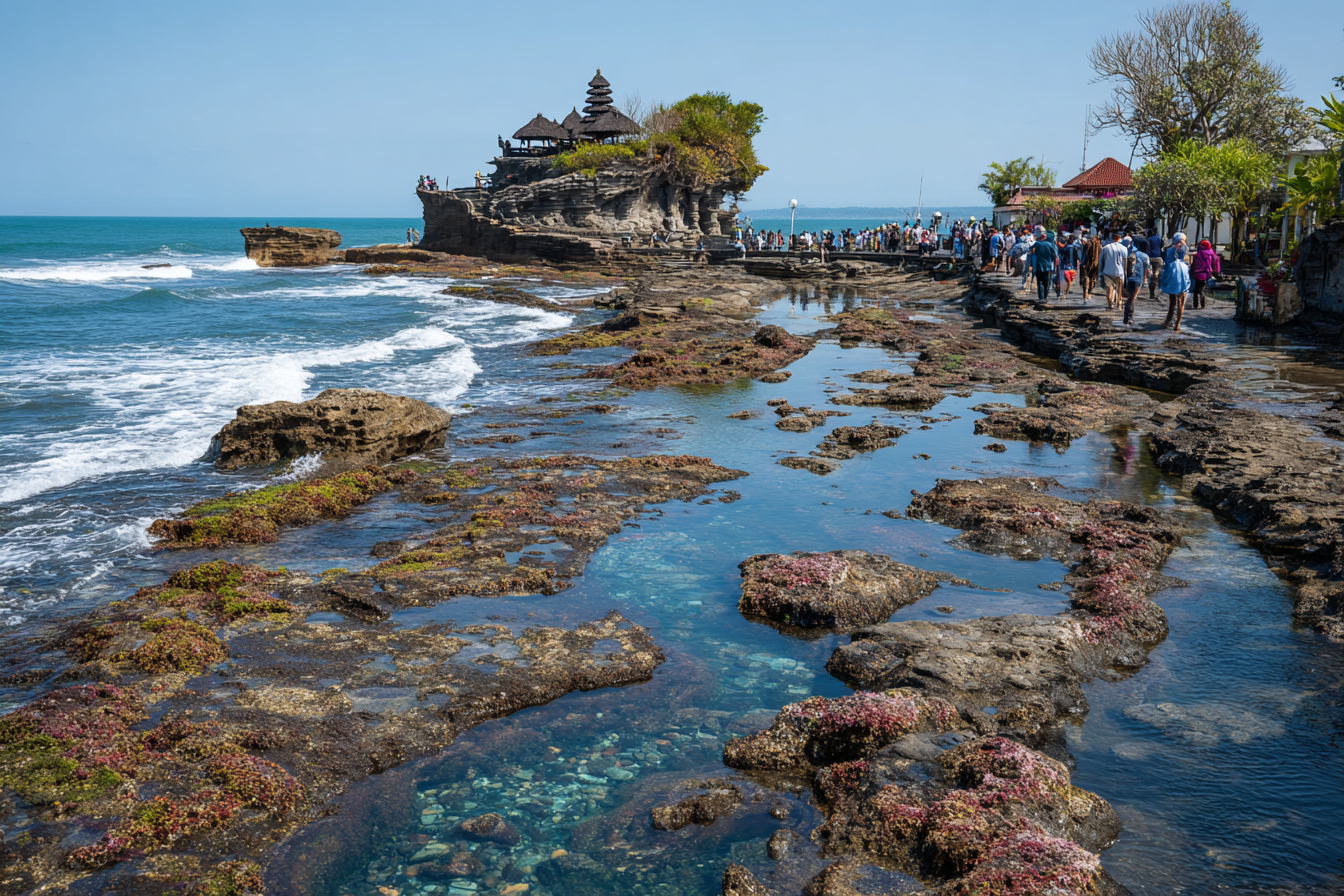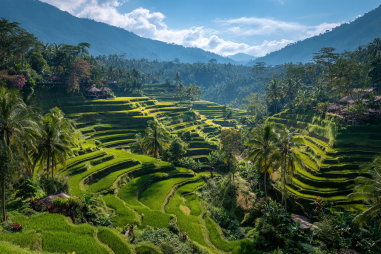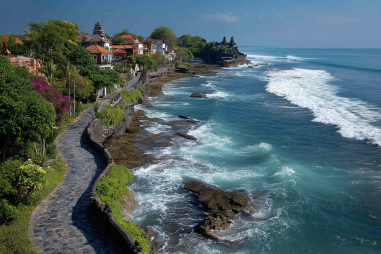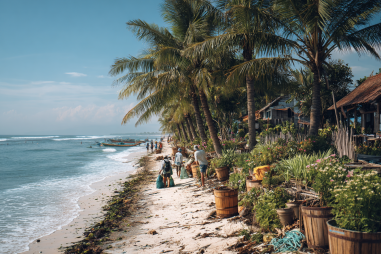Tanah Lot Temple is one of Bali’s most iconic landmarks, famous for its stunning oceanfront setting and cultural significance. Whether you’re a first-time visitor or returning to marvel at its beauty, choosing the right time to visit can significantly enhance your experience. From managing crowds to capturing breathtaking photos, timing your visit well makes all the difference. Let’s explore the best times of day and seasons to visit Tanah Lot Temple for the most enjoyable and memorable trip.
Understanding Climate Conditions Around Tanah Lot
Tanah Lot Temple is located on the southwestern coast of Bali, an area characterized by a tropical climate with distinct wet and dry seasons. Generally, temperatures range from a comfortable 24°C to 32°C (75°F to 90°F) throughout the year. The dry season, which lasts from April to October, is typically the best time to visit due to the pleasant weather and minimal rainfall. This season offers sunny skies and cooler breezes, making outdoor activities and sightseeing more enjoyable.
Conversely, the wet season from November to March can bring heavy, sudden downpours and humid conditions. While the temple looks dramatic with darker skies and stormy seas, rain can sometimes limit your exploration time. Also, slippery paths and higher tides during this time require more caution. So, if your schedule is flexible, planning your visit in the dry months will likely make for a more comfortable experience.
Tourist Seasons: High and Low
Bali is a popular destination year-round, but visitor patterns fluctuate notably around local holidays, international school breaks, and festival times. The high tourist season generally coincides with the dry season, particularly from July to August and during Christmas and New Year holidays. During these peak periods, Tanah Lot Temple can become quite crowded, as it is a must-see attraction for many tourists.
In contrast, the low season falls mainly during the wet months and right after the New Year until March. Visiting during these quieter times means fewer crowds, more space to explore peacefully, and often cheaper rates for nearby accommodation and transport. If you prefer serenity over busy tourist throngs and don’t mind the possibility of some rain, the low season offers unique advantages.
How Daily Tides Impact Your Visit
An important consideration for visiting Tanah Lot is the daily tidal patterns. The temple is perched on a rock formation just off the coast, and it becomes accessible by foot only during low tide. At high tide, the temple appears to be surrounded by water, creating a photo-worthy spectacle but limiting close exploration.
Checking tide schedules in advance is highly recommended. Arriving during low tide allows you to walk on the rocky shore to get up close to the temple, touch the water, and experience its spiritual ambiance fully. On the other hand, if you visit during high tide, you will still witness magnificent views and ocean waves crashing against the cliffs, but you won’t be able to approach the temple as easily.
Best Hours for Photography and Exploration
For those hoping to capture the iconic shots of Tanah Lot Temple, timing your visit during sunrise or sunset can produce dramatic lighting and vibrant colors. The golden hour—shortly after sunrise or before sunset—casts a warm glow that highlights the temple’s silhouette against the sky and sea.
Sunset is especially popular, as the temple faces west over the ocean, offering unobstructed views of the sun dipping below the horizon. However, keep in mind sunset time is also when the crowds are at their peak. If you want equally stunning photos with fewer people around, consider arriving early in the morning right after opening hours or during mid-afternoon, which tends to be quieter.
Avoiding Crowds on Weekends and Holidays
Tanah Lot attracts large numbers of local and international visitors on weekends and national holidays. If your schedule permits, weekdays are recommended to enjoy a more tranquil atmosphere. Early mornings and late afternoons during weekdays generally see the fewest visitors.
The temple is also a significant spiritual site for Balinese Hindu rituals and ceremonies, often scheduled during full moon days or special Hindu holidays. During these times, you may find the temple closed to tourists or access limited to worshippers. Checking event calendars ahead of time helps avoid unexpected closures or heavy crowds.
Weather Considerations Throughout the Year
The tropical climate means Bali is warm year-round, but the humidity and rainfall levels change. Remember to pack lightweight, breathable clothing and stay hydrated no matter when you visit. In the dry season, the weather is your friend, making walking around and exploring the surrounding gardens and viewpoints a delight.
During the rainy season, brief heavy showers are common but often occur in the late afternoon or evening, leaving plenty of dry time during the day. Still, prepare with an umbrella or light rain jacket, and be cautious of slippery stones and muddy trails near the temple.
Final Recommendations for Timing Your Visit
- Travel during the dry season (April to October) for the best weather conditions.
- Plan your visit on a weekday to avoid large crowds and enjoy a peaceful experience.
- Arrive during low tide to get closer to the temple and fully appreciate its setting.
- Choose early morning or late afternoon for both fewer crowds and beautiful lighting for photography.
- Check local calendars to avoid special ceremonies when tourist access might be restricted.
With some planning and consideration of these factors, your visit to Tanah Lot Temple can be a highlight of your Bali journey—a blend of natural beauty, cultural richness, and unforgettable moments.







